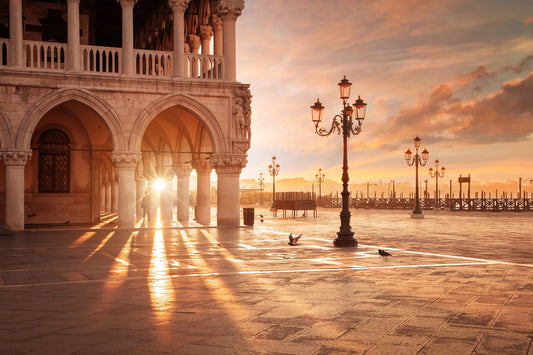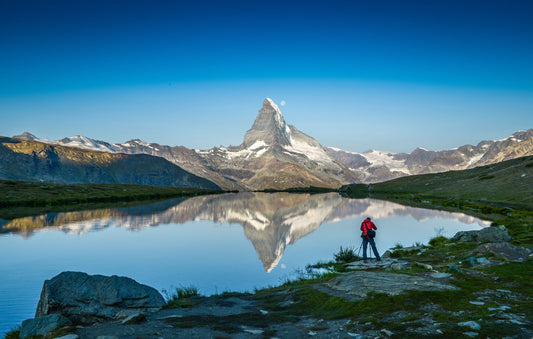How To photograph The Ningaloo Solar Eclipse.
Safety first - Never look directly at the Sun with the naked eye! This includes checking your composition through the view finder of your camera without an appropriate dark ND filter on your lens. An unfiltered camera is not safe without the proper eyewear protection. It goes the same for telescopes and unprotected eyes.
The sun is so bright, it can cause permanent damage to your eyesight. Use appropriate safety and solar filters. Useful link: https://beingintheshadow.com/2023/04/06/safe-solar-viewing-for-eclipse-2023/
Eclipse Update
Exmouth Solar Eclipse on 20 April 2023
- Starts - 9.59am (Moon touches the Sun’s edge)
- Maximum - 11.22am (maximum eclipse visibility)
- Finishes - 12.51pm (Moon leaves the sun’s edge)
- Total duration of the eclipse - 2 hours, 52 mins
- Total full eclipse - 62 seconds
Full eclipse – 11.22am, when the Moon is the closest to the centre of the Sun.
During totality, day will become night, stars & planets become visible, air temperatures drop and animals may change behaviour. The corona of the sun will look like a white halo. Those within the path of totality can remove their solar eclipse glasses and safely view totality with the naked eye.
Essential Photography Equipment
Here’s a few essential items that I packed, what equipment you should use to capture the eclipse safely, and a few camera settings you need to remember if you like to have a crack at photographing the eclipse... but above all, remember to enjoy the moment!
You don’t need an expensive camera to capture exceptional images!
- A DSLR or mirrorless camera
- A zoom lens 300 – 600mm
- Fully charge batterie & spare
- Memory cards
- A manual or electronic cable release
- ND or Sun Filters
- A steady tripod (don’t forget your camera mount)
If you are a keen photographer, a tracker is a must – ShootAndMove, Skywatcher Mini, etc.
How To Photograph The Eclipse?
If you just want to capture a few keep safe images of the eclipse, the process for photographing an eclipse is much easier than taking night photography or deep sky astrophotography... that’s when you know the right camera settings and have the right equipment of course.
Due to the brightness of the sun, the key factor you need to consider when taking your eclipse photos is your exposure time. I have attached bellow an ‘exposure guide’ cheat sheet, to assist you with your camera settings, however it doesn’t mean that every exposure time will produce a perfect image. Depending on your ‘camera & lens’ combination, your “perfect” image settings might be different to other photographers around you. I would always advise to do a rehearsal and practice your settings the day before, try a couple of lens & camera combo as well to see what works for you, so you are not overwhelmed on the day.
On the day, get there early, take some time to set up your gear, either manual focus or use AF, make sure that your ND or solar filter is properly attached, aim up and start playing with exposures. Start with a fast exposure – as you are using a long lens, I would highly recommend to start at 1/1000 to 1/4000 of a second – remember the hand-held lens rule; the shutter speed ratio shouldn’t be any slower than your focal (i.e. 500mm lens would be 1/500 to 1/1000 up, 600mm lens 1/600 to 1/2000. The longer the lens is, the faster you need to shoot to avoid camera shake unless you use a tripod. As the eclipse start, you will need to adjust your exposure time to allow for more light to come through. Typically, you won’t need a high f/stop number as the eclipse is pretty much a two-dimensional subject.
Exposure Table (Guide)
Opt1 – 100 ISO, f:8
Partial with ND4 – 1/2000
Partial with ND5 – 1/250
Baily’s Beads – 1/2000 (Baily’s Beards are extremely bright and change rapidly)
Chromosphere – 1/1000
Prominences – 1/500
Corona 0,1 – 1/125
Corona 0.2 – 1/30
Corona 0,5 – 1/8
Corona 1.0 – 1 / 2
Corona 2.0 – 1 sec
Corona 4.0 – 2 sec
Corona 8.0 – 8 sec
Opt2 – 200 ISO, f:11
Partial with ND5 – 1/1000
Chromosphere – 1/4000
Prominences – 1/2000
Corona 0,1 – 1/500
Corona 0.2 – 1/125
Corona 0,5 – 1/30
Corona 1.0 – 1/ 8
Corona 2.0 – 1/4
Corona 4.0 – 1 /2
Corona 8.0 – 2 sec
Technical notes
Note that the brightness of the corona varies dramatically with the distance from the Sun’s edge. Exposure value setting options above are estimates. For the best results I highly recommend to bracket your images +/-
I will be most likely using the following settings: f:8, shutter speed 1/1000 – 1/2000 at ISO 100 to start with, than gradually slow down my exposure as the moon cover the sun, eventually during the 62 second of total darkness, reduce my shutter speed down to ¼ sec - ½ sec and bracket 1 & 2 f:stop up/down.
Step-by-Step Set-Up Guide
Basic starting points:
- Set the lens’ focal length to chosen focal (e.g., 400 - 600mm)
- Set the camera’s exposure time to 1/1000 seconds
- Set the lens f-ratio (or f-stop) to chosen value (f/8)
- Set the camera’s ISO value to high definition. I usually shoot at ISO 100
- Check that the camera’s flash remains off
- Use a tripod and make sure that it is sturdy
- Check your image sharpness
- Set the lens focus manual or AF
- Point the camera to the general direction of the sun
- Use a cable release or turn on the camera’s time-delay feature to avoid shaking with you long exposure (10-second)
- Start shooting
Useful Apps:
Stellarium (Free)
Sky Guide (Free)
PhotoPills (Free)
FirstResponse (St John WA – Free)









